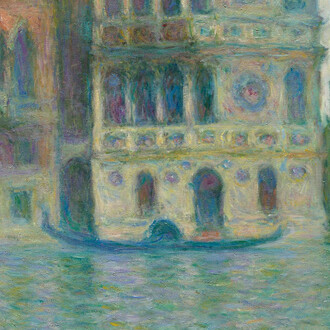These twelve massive carved alabaster panels, on view together for the first time, dominate the walls of our Hagop Kevorkian Gallery of Ancient Near Eastern Art. Originally brightly painted, they once adorned the vast palace of King Ashur-nasir-pal II (883–859 B.C.E.), one of the greatest rulers of ancient Assyria. Completed in 879 B.C.E. at the site of Kalhu (modern Nimrud, slightly north of what is now Baghdad, Iraq), the palace was decorated by skilled relief-carvers with these majestic images of kings, divinities, magical beings, and sacred trees.
In 879 B.C.E., King Ashur-nasir-pal II celebrated the completion of his palace at Kalhu by hosting a banquet for 69,574 guests, but the glorious palace was soon abandoned and forgotten. In 1840, nearly three thousand years later, a young English diplomat named Austen Henry Layard noticed an unusually large mound while rafting down the Tigris River. He returned in 1845 to unearth the remains of the palace, sending his discoveries to the British Museum in London. He sent so many monumental sculptures and relief-decorated slabs that the museum sold some of them, including these twelve reliefs. In 1855, the expatriate American Henry Stevens purchased the reliefs and shipped them to Boston. Unable to raise funds for the reliefs there, he sold them to James Lenox for the New-York Historical Society. In 1937, the Society lent them to the Brooklyn Museum and in 1955, Hagop Kevorkian, the New York collector and dealer, donated the funds to purchase and install the reliefs in the renamed Hagop Kevorkian Gallery of Ancient Near Eastern Art at the Brooklyn Museum.
Other objects from our Ancient Near Eastern collection in this gallery include such diverse examples of religious equipment as a bronze statuette of the sun god Shamash and a small animal-headed cart meant to hold liquid. Among a group of female figurines is one that dates from the fifth millennium B.C.E.—perhaps the oldest work on view here. The Sumerian culture of the third millennium B.C.E. is represented by finely wrought examples of jewelry in gold and semi-precious stones. From the Achaemenid Persian Empire, which succeeded the Assyrians, come pieces of palace relief and sculpture, as well as fragments of gold jewelry and silver vessels. Although each of these Near Eastern cultures had its own tradition, they frequently borrowed themes and artistic styles from one another. Certain subjects, such as lions and animal-headed monsters, were repeated for centuries in the lands that are now Iraq, Iran, and Turkey.
With funding from the State of New York, the Kevorkian Gallery has been renovated with two newly sloped floors designed to improve wheelchair access. The floors, both inclined less than eight percent, facilitate access to the gallery, the Beaux-Arts Court, and the East Wing galleries. The work was completed in fall 2009.
















